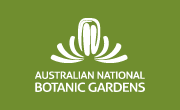Introduction
"Biological diversity' means the variability among living organisms from all sources including, inter alia, terrestrial, marine and other aquatic ecosystems and the ecological complexes of which they are part; this includes diversity within species, between species and of ecosystems’ (Convention on Biological Diversity 1992 ). The Convention recognised that biological diversity is about more than plants, animals and microorganisms and their ecosystems – it is about people and our need for food security, medicines, fresh air and water, shelter, and a clean and healthy environment in which to live. Degradation of biodiversity is thus a risk to continued human existence. To help address this risk, CSIRO Plant Industry and the Director of National Parks (Australian Government, now Department of Sustainability, Environment, Water, Population and Communities), through the Australian National Botanic Gardens, launched a new joint venture in 1993, the Centre for Plant Biodiversity Research.
This unique collaboration between Australia's top research institute conservation managers embraces:
- the bringing together of the wide-ranging skills, expertise and resources of both organisations, to allow new scope for scientific research on biodiversity that provides a basis for conservation, management and sustainable use of the Australian flora.
- the amalgamation of the plant specimen collections of the CSIRO and the Australian National Botanic Gardens into a consolidated Australian National Herbarium, constructing a permanent record of Australian plant biodiversity.
- the increased accessibility to information on Australian vegetation and plant resources for research, environmental management and public use.
The Research Projects of the Centre
The Centre’s major function is to document the biological diversity of the Australian environment through establishing the taxonomic identity and relationships of native plants, their geographical distribution, and their ecological relationships. These studies primarily concentrate on significant national plant groups such as eucalypts, orchids, grasses, grevilleas, mosses, rainforest laurels and the citrus family. The Centre has developed computer-based interactive systems for identifying rainforest trees and eucalypts.
Australia's Genetic Resources
Adaptation to local conditions and integration into our natural ecosystems means Australian native plants form a valuable source of genes that could be utilised to improve agricultural and industrial productivity. The Australian native species of Glycine contain leaf rust resistance genes that may be used to protect soybean crops, while the native Gossypium species are being tested to improve pest resistance in commercial cotton varieties.
The Australian National Botanic Gardens living collections comprise almost one-third of the Australian flora. This wealth of genetic material is available for research as well as for display.
Conservation Biology
The Centre's work includes maintenance and recovery of rare and threatened species, as its facilities provide a national focus for documenting, growing and protecting endangered native plants. The Centre has drawn on its extensive resources, and those of Environment Australia, in producing a new edition of Rare or Threatened Australian Plants.
Conservation biology relates not only to rare species, but to an understanding of the ecology and the dynamics of larger ecosystems. Research on the effects of fire, disease and fragmentation on the Australian environment is vital in the development of strategies for integrated land use and revegetation projects.
The Australian National Herbarium
The cornerstone of botanical research for the Centre for Plant Biodiversity Research is the Australian National Herbarium which houses a collection of 1.3 million plant specimens, documenting the diversity of the Australian flora. With specimens dating back to Captain Cook's 1770 expedition, the Herbarium's comprehensive collections underpin the reliable identification of plants originating from field studies and the extraction of ecological data. The Herbarium houses specialist collections of world importance, including:
- the world's most comprehensive eucalypts collection;
- an extensive collection of the flora of northern Australia and New Guinea;
- Australia's largest collection of mosses, lichens and liverworts;
- a specialist tropical rain forest collection housed in north Queensland.
The Australian National Herbarium is a valuable source of data for mapping past and present vegetation distribution, revealing variations due to changes in climate and landuse patterns. Its collections also function as a reference basis for the Flora of Australia project.
The Herbarium provides a range of services, including plant identification, for professional clients and the general public. Public enquiries can be submitted at the Visitor Information Centre on the Botanic Gardens site (Tel: (02) 6250-9450) where there is also a Public Reference Herbarium and small public library.
The Herbarium conducts volunteer programs for members of the public wishing to support the work of the Centre, and a specialised Student Botanical Internship Program for selected tertiary students to provide advanced training.
The Herbarium is located at three sites. The flowering plants collection is held at the herbarium in the grounds of CSIRO adjacent to the Botanic Gardens on Black Mountain. The cryptogam (including ferns) and gymnosperm collections are held in the herbarium adjacent to the Visitor Information Centre within the Australian National Botanic Gardens. A third collection concentrating on rainforest species is held at the Atherton Herbarium Annexe in north Queensland.
Botanical Information Management
The Centre for Plant Biodiversity Research uses its research programs and collections to provide a national focus for botanical data. Text and image data based on the collections have been made available throughout the world via the Internet. The Centre is also responsible for the coordination and maintenance of important national botanical databases developed by the Australian Biological Resources Study, Australian Nature Conservation Agency and CSIRO, including the Australian Plant Name Index, Rare or Threatened Australian Plants (ROTAP), and the Economic Plants of Australia. The Centre is taking a leading role in making complex biological information more accessible by establishing common standards and conventions for botanical databases
![An Australian Government Initiative [logo]](/images/austgovt_canbr_90px.gif)




